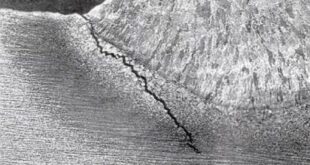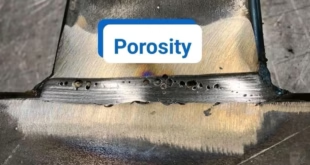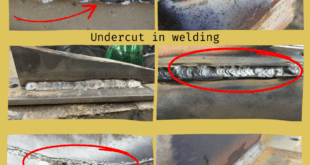What is Underfill in Welding
Introduction to Underfill in Welding
In welding, achieving a strong and defect-free weld is essential for ensuring the structural integrity of a joint. However, welding defects can occur if the process isn’t carefully controlled. One such defect is underfill, which can lead to serious issues if not properly addressed. So, what exactly is underfill in welding, and why does it matter?
Underfill is a condition where the weld joint does not have enough metal to meet the surface of the base materials. This creates a concave weld profile that can weaken the joint and compromise the overall strength of the structure. Understanding the causes, identification methods, and solutions for underfill is critical for welders and engineers alike.

What Causes Underfill in Welding?
Several factors can lead to underfill in a weld, and these causes often boil down to improper technique, insufficient material, or incorrect settings on the welding machine. Let’s break these down.
- Insufficient Weld Metal Deposition: If the welder doesn’t deposit enough filler material during the welding process, the joint won’t be fully filled. This could be due to improper control of the filler rod or wire or simply not enough passes during the weld.
- Poor Welder Technique: Sometimes, the issue isn’t the material but the technique. If the welder moves too quickly or doesn’t maintain the correct angle, the weld metal won’t deposit evenly across the joint, leading to underfill.
- Incorrect Welding Parameters: Things like voltage, amperage, and travel speed play a huge role in achieving a full weld. When these settings are off, it can cause the weld to lack sufficient metal and create an underfilled joint.
Types of Underfill Defects
Not all underfill looks the same. There are generally two types of underfill defects that can occur during welding:
- Localized Underfill: This type happens in certain sections of the weld, where the filler metal hasn’t properly filled the joint. This can often go unnoticed without close inspection.
- Continuous Underfill: Continuous underfill extends along the entire length of the weld. This is typically more serious, as it indicates a consistent issue with the welding process or parameters.
How to Identify Underfill in Welds
Spotting underfill before it becomes a larger issue is key to maintaining weld quality. Fortunately, there are a few ways to detect it.
- Visual Inspection: In some cases, underfill is visible to the naked eye. Welders and inspectors can see that the weld joint has a concave profile, indicating insufficient metal in the weld.
- Non-Destructive Testing Methods (NDT): Techniques like ultrasonic testing (UT) and radiographic testing (RT) can reveal underfill that may not be obvious visually. These tests provide a deeper look into the weld and are essential in critical applications where weld integrity is crucial.
Impact of Underfill on Weld Strength
Underfill might not seem like a major issue at first glance, but its impact on weld strength can be significant. A weld that is underfilled is inherently weaker because it doesn’t have the required amount of metal to support the load or stresses it’s designed to handle.
- Weakening of Structure: A weld with underfill has less reinforcement, which can lead to structural failures, especially in high-stress environments like bridges, pipelines, or pressure vessels.
- Risks Associated with Underfilled Welds: Aside from structural weakness, underfill also creates stress concentration points where cracks can easily propagate, leading to premature failures in the welded component.
Prevention of Underfill in Welding
The best way to deal with underfill is to prevent it from occurring in the first place. Here are a few methods to ensure that underfill doesn’t happen in your welds:
- Proper Welding Technique: Training welders to maintain the correct travel speed, angle, and filler material deposition can drastically reduce the chances of underfill. A slow, consistent approach helps ensure the joint is fully filled.
- Adequate Filler Material and Heat Input: Ensuring the correct amount of filler material and heat is used during the welding process is critical. This means adjusting the welding machine’s settings to match the material being welded and the joint configuration.
- Role of Welder Skill and Training: Skilled welders who understand the nuances of their equipment and the materials they’re working with are far less likely to create underfilled welds. Ongoing training and certification programs help ensure welders stay sharp.
Repairing Underfilled Welds
If underfill is detected, it must be addressed quickly to avoid compromising the joint’s integrity. Repairing an underfilled weld typically involves one of the following methods:
- Re-welding the Joint: In cases where the underfill is significant, the joint may need to be completely re-welded to ensure full penetration and sufficient fill.
- Grinding and Filling: For minor underfill defects, grinding the surface of the weld and applying additional filler material can correct the issue without needing a complete re-weld.
Industry Standards and Acceptance Criteria for Underfill
Different industries have specific standards and codes that dictate acceptable levels of underfill in welded joints. These standards ensure the weld’s strength and reliability:
- ASME and AWS Standards: According to American Society of Mechanical Engineers (ASME) and American Welding Society (AWS) codes, underfill is allowed only within certain limits, depending on the type of weld and its application. Exceeding these limits can result in the weld being rejected.
- Acceptable Limits for Underfill: The acceptable amount of underfill typically ranges from 0.01 to 0.04 inches, depending on the joint configuration and application. Anything beyond this range could compromise the weld’s performance.
FAQs
What are the main causes of underfill?
Underfill is primarily caused by insufficient weld metal deposition, poor welding technique, or incorrect welding parameters such as voltage and travel speed.
Can underfill be detected during visual inspection?
Yes, in many cases, underfill can be identified visually as a concave or incomplete weld profile. However, non-destructive testing methods like ultrasonic or radiographic testing are often used for more accurate detection.
How does underfill affect the longevity of a weld?
Underfill weakens the weld, leading to potential structural failures over time, especially in high-stress environments. It creates stress concentration points, which can cause cracks and early failure.
Is underfill acceptable under any welding code?
Underfill is acceptable within certain limits defined by standards such as those set by ASME and AWS. Exceeding these limits can result in a weld being rejected.
What is the best way to fix an underfilled weld?
Minor underfill can be corrected by grinding the surface and adding additional filler material. In more severe cases, re-welding the joint may be necessary.
Conclusion
Underfill is a common but avoidable welding defect that can weaken the structural integrity of a joint. By understanding its causes, learning how to identify it, and implementing preventive measures, welders can ensure strong, reliable welds. Adhering to industry standards and taking corrective actions when necessary can help maintain the quality of welded joints, reducing the risk of failure.
 Welding of Welders All about Welding and Welders
Welding of Welders All about Welding and Welders



